Ernst Hoyos, former Chief Rider at the Spanish Riding School, once said to me that he would never like to teach in English because there are not enough words. He said that to discuss a half pass, he could find a dozen words in German, but only a couple in English. And it is true with expressions like descente de main and überstreichen – you can, with difficulty, translate them into English but lose quite a deal of precision in the process…
Both involve breaking the contact, giving the reins, and in both cases the horse is expected to maintain his outline.
These concepts were crucial in the late Miguel Tavora’s day-to-day training. They are closely related to the search for a horse in perfect balance. Share his words…
“The ideal horse, I ask him to do something and he should keep doing it until he dies – unless I tell him to do something different. But this isn’t what happens, the horse will always lose the rhythm, lose the balance, we have to make amendments, but we only act if – and when – something changes.”
“We have techniques to teach the horse to go in self carriage. You have the descente de main, or the überstreichen which is exactly the same thing, but a different way to achieve it. I use more the überstreichen with young horses, and the descente de main with a horse that is more collected. What is important is that you break the contact to test the horse’s balance .”
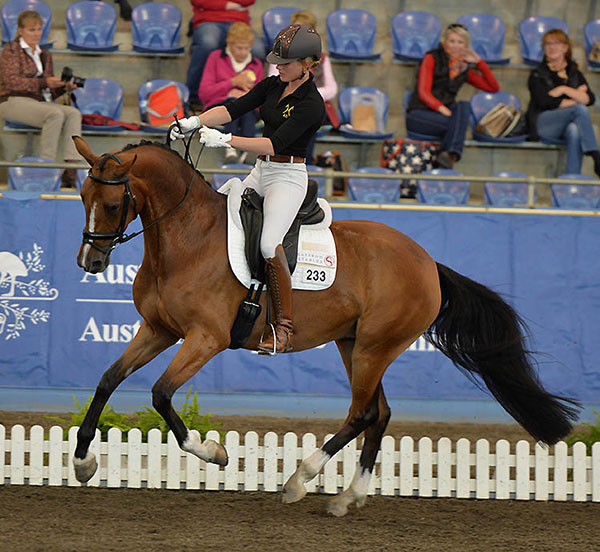
“The reason for this is that the young horse should move with a balance more horizontal, and in order to break the contact, I stretch my hands towards the bit. With a more advanced horse, I use the classical descente de main, which means lowering of the hands, to break the contact. At this stage the horse is more collected and therefore lowering the hands is sufficient.”
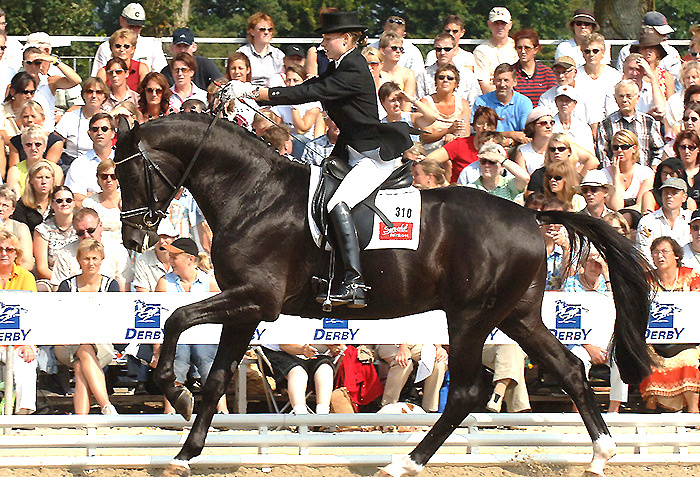
“I read one trainer who said, ‘if I give the rein after three strides I have to take it back again, otherwise the horse will stretch his neck.’ That is not correct. I give, and if the horse stretches his neck after three strides, it means the horse is not in self carriage. The horse should do nothing that I don’t tell him to do. If he does things that I have not told him to do, he is just disobedient.”
“If I want him to extend the neck, or lower the neck, I have to give him a signal to do that, a signal that is different from the uberstreichen. For uberstreichen, I just break the contact, and everything is very steady and quiet. On the other hand, if I want the horse to lengthen the neck, I give little by little, and at the same time, with my legs I push and make the horse follow my hands to lengthen, arch and lower the neck.”
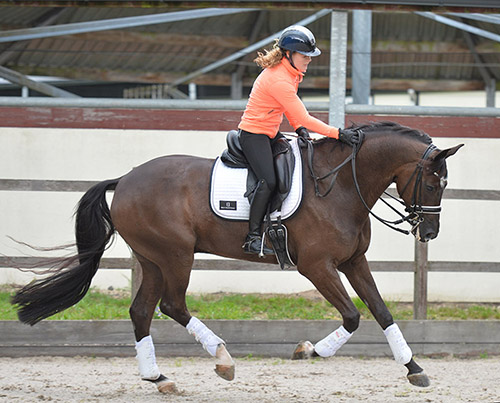
“It is not instinctive for the horse to do this, I have to teach the horse to do this. Normally I do it on the circle and open my inside rein, if necessary right down. If I make the descent of the neck on the circle, then there is much less chance of the horse going on the forehand. When the horse takes the correct bend on the circle, he will keep the balance, if he goes on the forehand, I will feel it straight away because he will make the circle smaller or bigger.”
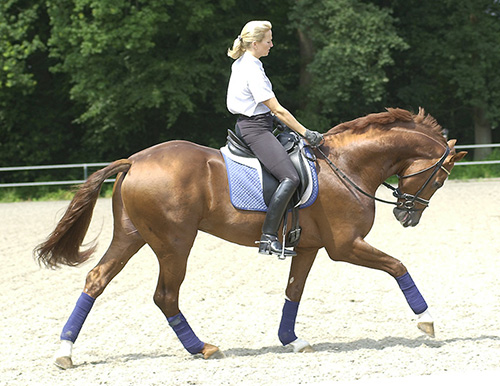
“I make a signal with my fingers on the reins to lower the neck, I make a signal with my legs to make him lengthen the neck, I prefer to say, arch the neck down. Because if we just say ‘stretch’ he might lengthen and hollow, he can open the gullet and put the neck down, and everything goes hollow. Arch the neck down – he lengthens and arches at the same time. Some horses might lengthen more than others, it depends on the conformation and how long they are over the loins.”
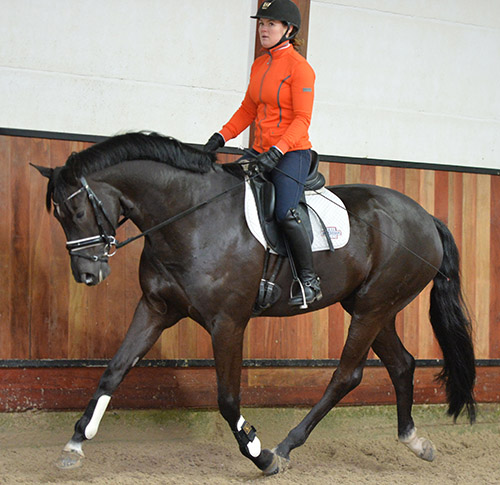
“Each horse is different, but it is not the question of the number of strides – when I am making the überstreichen, I give, and the ideal situation is that the horse goes exactly the same way as long I don’t do anything to change his attitude. If I do, descente de main, exactly the same – the idea is to put the horse in self-carriage, I do nothing, and the horse changes nothing. In the beginning, the horse is not going to stay like that – I go in collected trot, I give and the horse will try to go away, I make an amendment, put him right, then I give, make an amendment, give, until the horse understands – ah, he wants me to stay here, and when he learns, he will stay there as long as I want.”

“If I want him to arch the neck down, I use different aids, or I bend him, and I always use my legs a bit more. When I make a descente of hands or überstreichen, I shouldn’t do anything special, I’m just on standby to keep the impulsion. But when I do the lengthening of the neck down, my legs have to cooperate with the giving of the reins, so the horse follows and goes down. That is a big difference.”
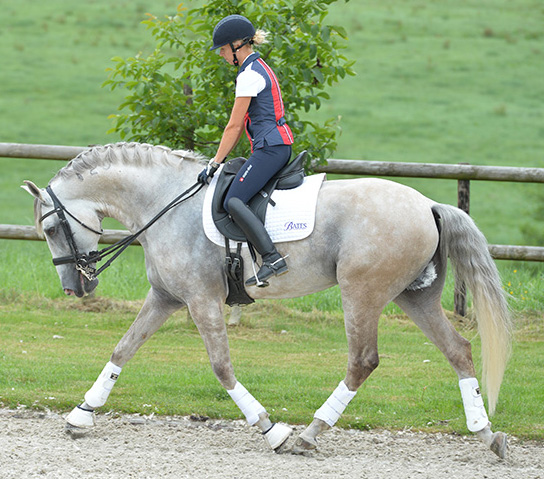
Maria Caetano, Portuguese Olympic representative demonstrates…
“General Decarpentry described ‘descente de main’ as the relaxation of the pressure of the fingers on the reins which allows a gradual lengthening of the reins while the horse keeps his balance and poise without changing his attitude in any way. This is how la Guérinière and later, Baucher, described this action. The exercise lowering of the neck, in some translations of German texts is referred to as ‘chewing the reins out of the riders’ hands’. I disagree with this description, as this action would be very similar to a horse who pulls on the reins. The lowering of the neck, which I prefer, is a gymnastic exercise to stretch and strengthen the top line, or just to stretch and relax after working in collection.”
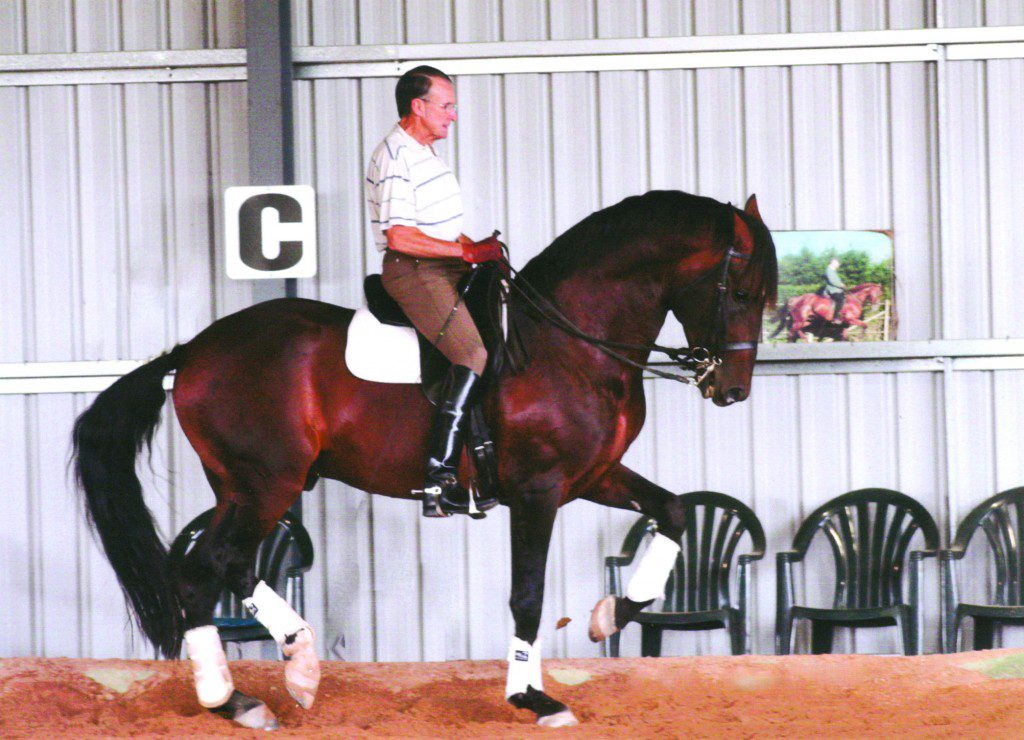
“The descente of hands keeps the horse in self-carriage, the lowering of the neck allows the horse to arch and lengthen the neck down. It is similar what you are doing, and the horse might get confused, if he tries to do the wrong thing, then I make an amendment and correct him.”
I can understand the role of descente de main in the collected work, but for extensions in trot or canter, do we want more contact? Do you want more weight in the rider’s hand?
“I don’t. I want to feel the contact firmer, because the push is firmer, but I don’t want to feel any more pressure. There is a feeling that is firmer, I feel everything is going forward. People say the horse ‘goes to the bit’ – he doesn’t go to the bit, the bit is in his mouth. He accepts the bit – that is completely different.”
“When I lengthen the paces, I must feel a firmer contact – not stronger – on my reins.”
“On the circle I like to make an überstreichen to encourage the horse to go in self carriage. I make the überstreichen only on the inside rein, to keep him a little bit bent. The longer he goes without contact, the better – it means his body is in self carriage, and he is comfortable going like this. But I still have the contact on the outside rein because that explains to the horse that I want that stretch, and I don’t run the risk that he will become shorter in the neck. By giving the inside rein and keeping the outside rein very steady, I encourage the horse to accept the outside rein, and to be firmer on the outside rein. The most important thing when I make a descente de main or überstreichen is that the horse must stay in the same attitude. If he changes his attitude, he has changed the balance. I need to make an amendment to put him back on the right balance.”
Breeding? Go to www.ihb.com.au and choose the right stallion for your mare. There’s a great selection.
Like Edward, sire of Olympic Showjumping Medal winner, King Edward
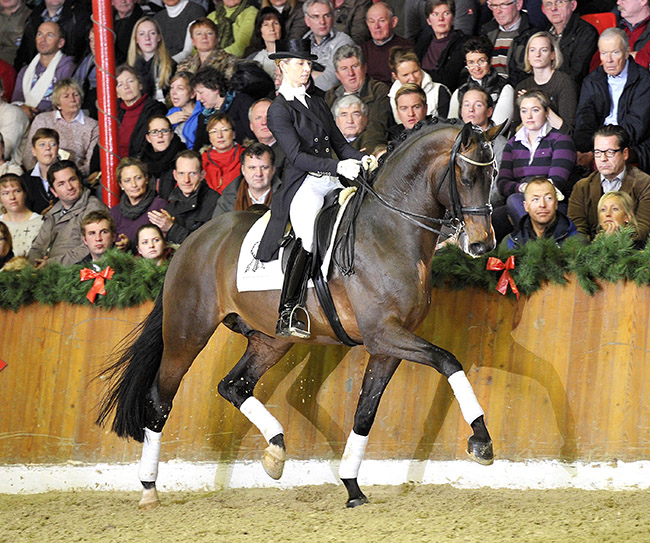
Or Bordeaux, a member of the strong ‘B’ Line
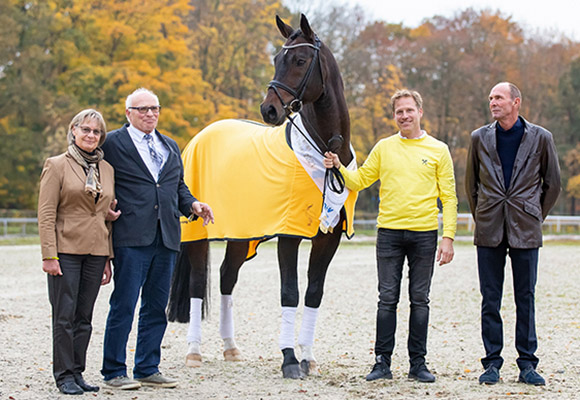
Or Fidertanz, representing the successful ‘F’ Line and the 2022 Hannoverian Stallion of the Year




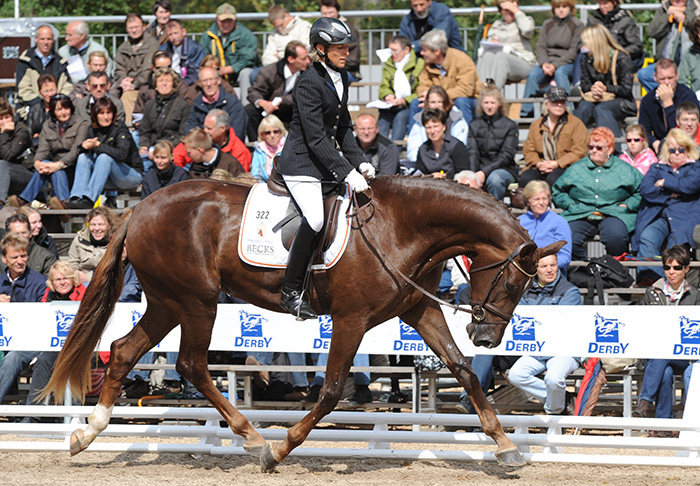
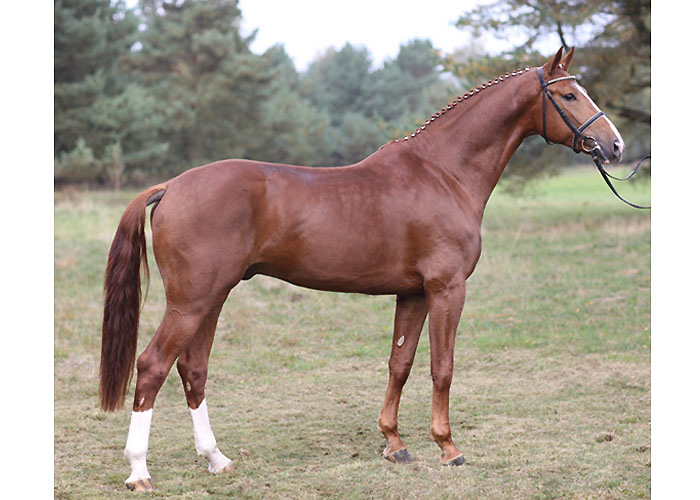
Thank you Chris. A wonderful article from a wonderful coach and rider. I miss Miguel dearly. Megan